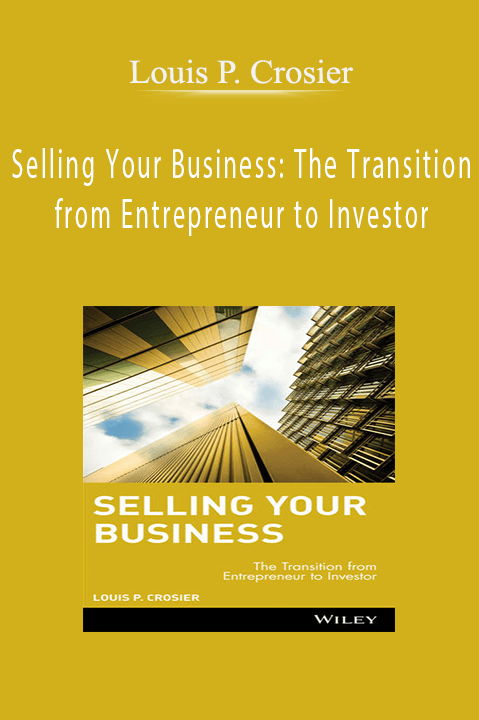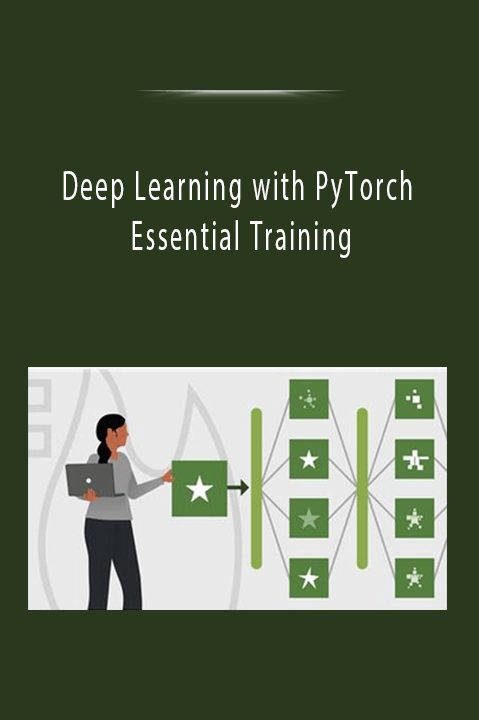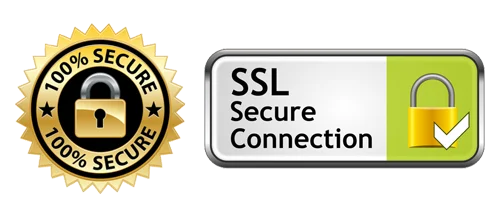Louis P. Crosier – Selling Your Business: The Transition from Entrepreneur to Investor
By: Louis P. Crosier
Publisher: Wiley (June 2004)
Format: Ebook (PDF)
Description:
Twenty-three top advisors from leading firms show entrepreneurs how to transition their business
The Entrepreneur’s Transition provides an all-in-one handbook for entrepreneurs and corporate insiders seeking advice on their personal financial planning prior to selling or taking a business public. It provides a concise, easy-to-read blueprint that can help business leaders navigate before and after a transaction-so they are well positioned and can avoid costly mistakes. The Entrepreneur’s Transition is organized chronologically beginning with the issues a business owner should be concerned with prior to a transaction. It then moves, step by step, through the transaction process and into post transaction diversification, reinvestment, and philanthropy.
Louis Crosier (Boston, MA) is a principal at Windward Investment Management and serves as a member of Windward’s Investment Committee. His responsibilities include managing client portfolios and overseeing the firm’s investment consulting practice.
About the Author:
Table of contents:
Foreword (Edward I. Rudman, Co-Founder and Chairman, Pell Rudman, now Atlantic Trust Pell Rudman).
Introduction (Louis P. Crosier).
Part I: Before Selling Your Business.
Chapter 1: Pre-IPO/Presale Planning (William R. Fleming, Director; and Daniel Carbonneau, Senior Manager; with Richard L. Kohan, Partner, PricewaterhouseCoopers).
Setting the Stage.
Choosing a Business Structure.
Building a Professional Service Team.
Obtaining Financing.
Sharing Ownership with Employees.
Company Benefits and Policies.
Conclusion.
Chapter 2: Trust and Estate Basics (A. Silvana Giner, Senior Partner; and Kimberly Cohen, Junior Partner, Hale & Dorr).
Basic Wealth Transfer Tools.
Presale and Pre-IPO Planning.
Complex Wealth Transfer and Estate Planning Issues.
Summary.
Chapter 3: Life Insurance: From the Basics to the Advanced (Herbert K. Daroff, J.D., CFP®, Baystate Financial Services).
Permanent Insurance.
Term Insurance.
What Product Is Best?
Buying Term and Investing the Difference, but in a Tax-Advantaged Manner.
How Your Money Gets Invested.
Expenses.
Assessing Cash Value During Lifetime.
Selecting the Right Premium Amount.
Selecting the Right Premium Payer.
Who Should Own the Insurance?
Who Should Be Insured?
Conclusion.
Chapter 4: Negotiating the Deal (F. George Davitt, Partner, Testa, Hurwitz & Thibeault; and Barry Nalebuff, Ph.D., Milton Steinbach Professor of Management, Yale University School of Management).
Sell Your Company Right.
An Open Selling Process.
A Closed Selling Process.
Paying Bidders to Play.
Right of First Refusal.
Right of First Offer.
An Offer You Can’t Refuse.
Professional Help.
Earn-Outs.
Earn-Ins.
Commonly Mistaken Assumptions.
Sale or IPO?
The IPO Route.
Selling Rather Than Going Public.
Sale for Cash or Stock.
Conclusion.
Part II: After Selling Your Business.
Chapter 5: How Your Life Changes: Psychology of a Windfall (Marty Carter, Family Wealth Counselor, Charles D. Haines LLC; and Charles W. Collier, Senior Philanthropic Advisor, Harvard University).
Impact of the Sale on the Entrepreneur.
Impact of Wealth on the Entire Family.
Conclusion.
Chapter 6: Overview of the Wealth Management Industry (David M. Spungen, Managing Partner, Hillview Capital Advisors).
Investment Office.
One-Stop Shop.
Hybrid.
How to Evaluate Wealth Management Firms.
Chapter 7: Managing Concentrated and Restricted Stock Positions (David N. Elan, CFA).
Restricted Stock and Equity Risk Management.
Definitions and Examples.
Public Policy and Rule 144 of the Securities Act of 1933.
Registration Rights.
Hedging and Taxation.
Derivative Strategies.
Nonderivative Strategies.
Negotiating with Broker-Dealers and Finding the Best Counterparty.
Philanthropic Strategies.
Professional Advice.
Chapter 8: Asset Allocation (Stephen J. Cucchiaro, President and Chief Investment Officer, Windward Investment Management).
Conclusion.
Chapter 9: Developing an Investment Policy Statement (Ramelle M. Hieronymus, Principal, Prime, Buchholz & Associates).
Investment Objectives.
Spending Guidelines.
Asset Allocation.
Rebalancing.
Manager Selection and Evaluation.
Limitations and Restrictions.
Communication and Reporting.
Summary.
Sample Statement of Investment Objectives, Goals, and Policy Guidelines.
Part III: Investing for the Long Term.
Chapter 10: Selecting Investment Managers (Paul Greenwood, Director of US Equity Investment Management & Research, Russell Investment Group).
Active or Passive?
Four Ps.
People and Organization.
Portfolios.
Performance 163
Summary 164
Chapter 11: Risk: How Much Should You Take? (Paula Boyer Kennedy, CPA, CFP®).
Risks of Specific Asset Classes.
Market Timing.
Measuring Risk.
Risk-Adjusted Returns.
Tax Risk.
How Do You Minimize Risk?
How Do You Maximize Return While Minimizing Risk?
Time and Risk.
The Psychology of Risk.
How Much Risk Should You Take?
Chapter 12: Fixed Income (Peter B. Coffin, President, Breckinridge Capital Advisors).
Municipal Market Inefficiencies.
Portfolio Construction.
Duration—A Portfolio’s Sensitivity to Changes in Interest Rates.
Ladders versus Barbells.
Credit Quality and Default Risk.
Ratings and Bond Insurance.
Pre-Refunded/Escrowed Municipal Bonds.
High-Yield Municipal Bonds.
Premium versus Discount Bonds.
Call (Early Redemption).
Conclusion.
Chapter 13: Global Investing (Lindsey A. Richardson, Principal, State Street Global Advisors).
Theoretical Benefits of Non-U.S. Investing.
Forces of Globalization.
American Depository Receipts versus Local Stocks.
Diversification and Returns.
Opportunity Set.
Global Mandates.
Currency.
Selecting Managers.
Conclusion.
Chapter 14: Real Estate (Nicholas Bienstock, Managing Partner, Savanna Partners; with Laura Corwin Burkhart, Founder, Slate Capital).
Why Invest in Real Estate?
Real Estate Asset Classes.
Real Estate Investment Options.
Conclusion.
Chapter 15: Private Equity (Sallie Shuping Russell, General Partner, Intersouth Partners).
Types of Private Equity Investments.
Who Will Invest My Money?
Common Terms and Conditions.
Portfolio Example.
Conclusion.
Chapter 16: Hedge Funds (DeFred G. Folts III, President, Mettowee Capital Advisors).
Industry Characteristics and Background.
Different Types of Hedge Fund Strategies.
Risk-Adjusted Rates of Return Among Hedge Fund Strategies.
Variability of Returns Among Hedge Fund Strategies.
Why Invest in Hedge Funds?
How to Think About Incorporating Hedge Funds into a Portfolio.
How to Invest in Hedge Funds: Funds of Funds versus Individual Managers.
What to Look for in a Hedge Fund Manager.
Conclusion.
Chapter 17: Performance (Robert E. Phillips, Ph.D., President, R.E. Phillips Systems).
Single-Period Return Calculations.
Multiperiod Return Calculations.
Comparing Portfolio Returns.
Composite Performance.
Adjusting Returns for Risk.
Estimating Risk-Adjusted Return.
Comparative Evaluation of Investment Performance.
Chapter 18: Ongoing Management and Accountability (Douglas Ederle, Managing Director, SCS Financial and; Todd Millay, Partner, CCC Alliance).
Range of Structures for Ongoing Management.
Basic Monitoring Criteria for External Providers.
Reviewing Your Provider’s Peformance over Time.
Provider-Specific Issues to Watch.
Summary.
Part IV: Philanthropy.
Chapter 19: Philanthropy and the Venturesome Donor (Stephen P. Johnson, Vice President, The Philanthropic Initiative).
Why Give?
Getting Started—Some Definitions.
Getting Started—The Advisor’s Role.
Getting Started—Some Questions.
Giving Well—Qualities of Effective Philanthropy.
Vehicles for Giving.
Direct Gifts.
Conclusion.
Conclusion—Getting It Right: The Key Decisions You Will Make (Louis P. Crosier).
Index.
Digital Download Louis P. Crosier – Selling Your Business: The Transition from Entrepreneur to Investor at Offimc.click Now!
Delivery Information
- Upon ordering the product, a delivery email with download instructions will be sent immediately to you so that you may download your files. If you log in (or create an account) prior to purchase you will also be able to access your downloads from your account dashboard.
- It is a digital download, so please download the order items and save them to your hard drive. In case the link is broken for any reason, please contact us and we will resend the new download link to you.
- If you don't receive the download link, please don’t worry about that. We will update and notify you as soon as possible from 8:00 AM – 8:00 PM (UTC+8).
- Please Contact Us if there are any further questions or concerns you may have. We are always happy to assist!








9 reviews for Selling Your Business: The Transition from Entrepreneur to Investor – Louis P. Crosier
There are no reviews yet.